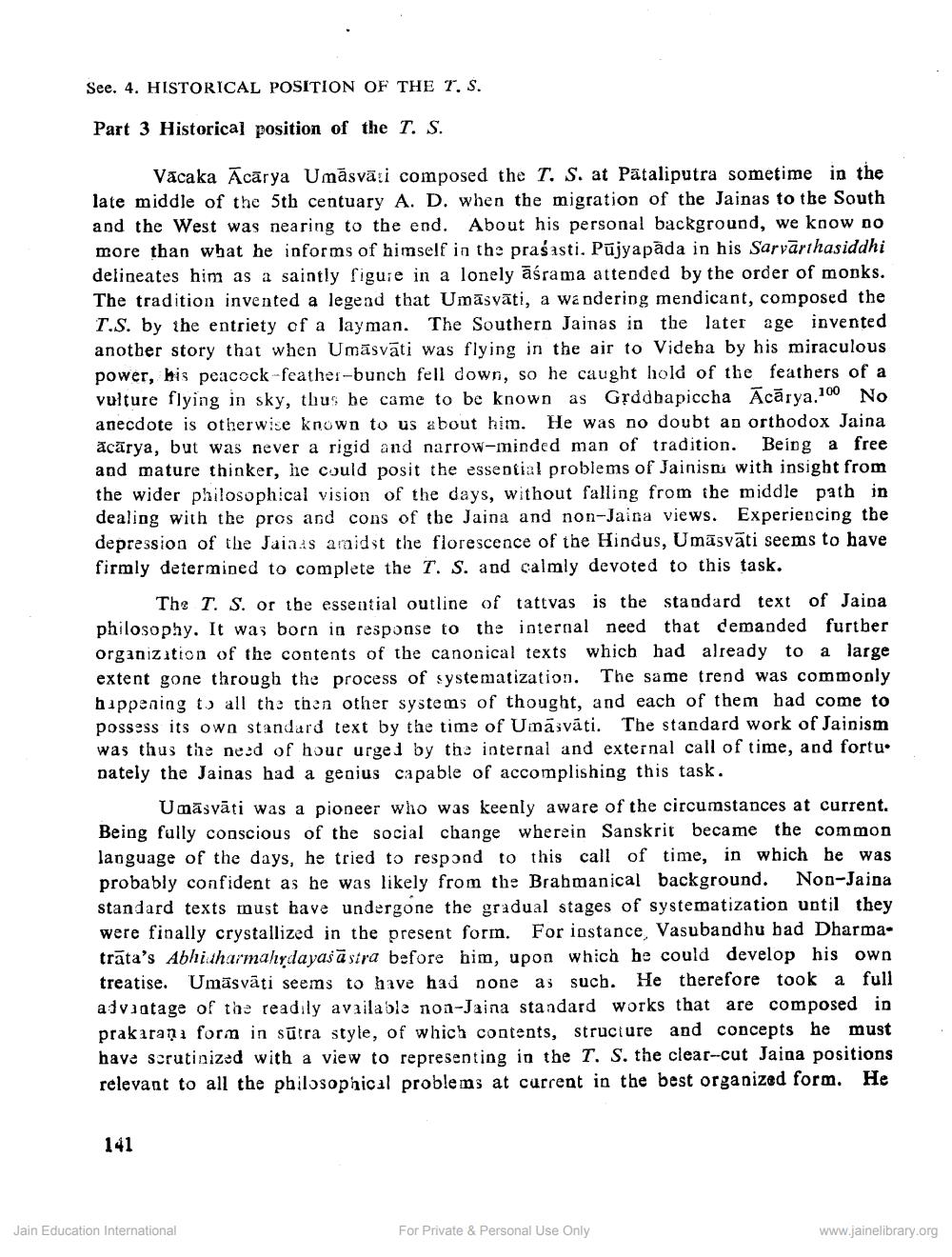________________
See. 4. HISTORICAL POSITION OF THE T. S.
Part 3 Historical position of the T. S.
Vacaka Ācārya Umāsvādi composed the T. S. at Pataliputra sometime in the late middle of the 5th centuary A. D. when the migration of the Jainas to the South and the West was nearing to the end. About his personal background, we know no more than what he informs of himself in the prasasti. Pūjyapāda in his Sarvārthasiddhi delineates him as a saintly figure in a lonely āśrama attended by the order of monks. The tradition invented a legend that Umāsvāti, a wandering mendicant, composed the T.S. by the entriety of a layman. The Southern Jainas in the later age invented another story that when Umāsvāti was flying in the air to Videha by his miraculous power, his peacock-feather-bunch fell down, so he caught hold of the feathers of a vulture flying in sky, thus he came to be known as Grddba piccha Ācārya.100 No anecdote is otherwise known to us about him. He was no doubt an orthodox Jaina ācārya, but was never a rigid and narrow-minded man of tradition. Being a free and mature thinker, he could posit the essential problems of Jainisni with insight from the wider philosophical vision of the days, without falling from the middle path in dealing with the pros and cons of the Jaina and non-Jaina views. Experiencing the depression of the Jaiaus araidst the florescence of the Hindus, Umāsvāti seems to have firmly determined to complete the T. S. and calmly devoted to this task.
The T. S. or the essential outline of tattvas is the standard text of Jaina philosophy. It was born in response to the internal need that demanded further organization of the contents of the canonical texts which had already to a large extent gone through the process of systematization. The same trend was commonly happening to all the than other systems of thought, and each of them had come to possess its own standard text by the time of Unāvāti. The standard work of Jainism was thus the need of hour urged by the internal and external call of time, and fortu nately the Jainas had a genius capable of accomplishing this task.
Umāsvāti was a pioneer who was keenly aware of the circumstances at current. Being fully conscious of the social change wherein Sanskrit became the common language of the days, he tried to respond to this call of time, in which he was probably confident as he was likely from the Brahmanical background. Non-Jaina standard texts must have undergone the gradual stages of systematization until they were finally crystallized in the present form. For iostance, Vasubandhu bad Dharmatrāta's Abhi tharmahydayasā sira before him, upon which he could develop his own treatise. Umāsvāti seems to have had none as such. He therefore took a full advintage of the readily available non-Jaina standard works that are composed in prakaranı form in sūtra style, of which contents, structure and concepts he must have scrutinized with a view to representing in the T. S. the clear-cut Jaina positions relevant to all the philosophical problems at current in the best organized form. He
141
Jain Education International
For Private & Personal Use Only
www.jainelibrary.org




